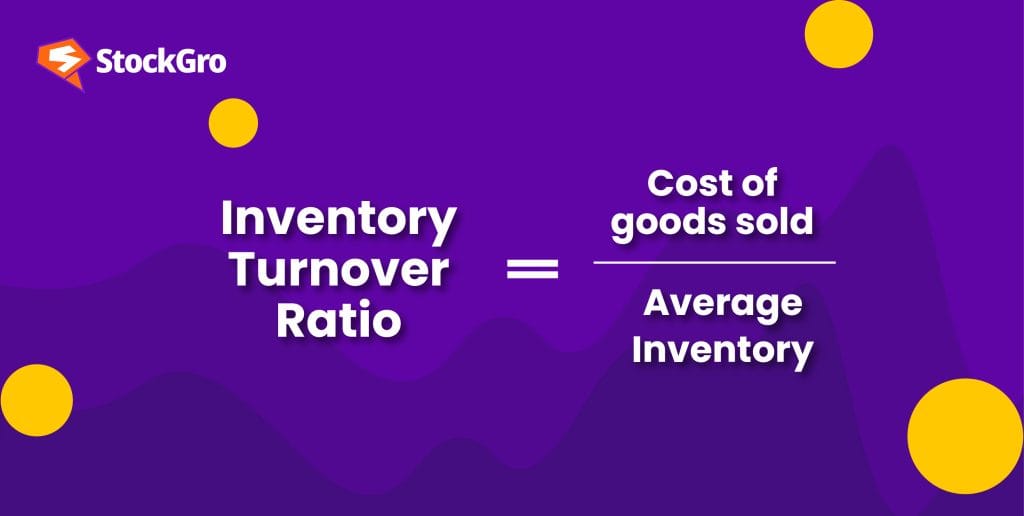
In this fast-changing business environment, inventory management can be a crucial determinant of a company’s overall profitability. A term called the inventory turnover ratio is used to describe the proportion that demonstrates stock efficiency.
This vital indicator also shows the organisation’s effectiveness and sound financial condition, as well as how well it uses resources in terms of time.
This article explains what inventory turnover ratio means as well as how it works so that it can help you make informed decisions and analyse data properly.
Must read: Unlocking financial insights: The power of ratio analysis
What is the inventory turnover ratio?
The inventory turnover ratio is a financial ratio that compares how many times a product has been sold as compared to the inventory costs (COGS) over a certain period. The period frequently used, usually one fiscal year, may be divided by the company’s inventory turnover ratio to determine how many days are needed to get rid of an average stock.
The inventory turnover ratio is among the efficiency ratios used in assessing how effectively a business firm employs assets. It helps people who run businesses make decisions concerning prices, production methods, marketing techniques, and purchasing capacity.
How to calculate the inventory turnover ratio?
The following is the formula for the inventory turnover ratio:
Inventory turnover ratio= COGSAverage Inventory
The inventory turnover ratio is calculated in days. The average inventory to be used in this equation can be determined by the following formula:
Average inventory= (Opening Inventory + Closing Inventory)2
Using the average inventories, the ratio gives a more precise picture of the inventory volume, which considers any seasonal changes.
Inventory turnover ratio interpretation
The ideal inventory turnover ratio may differ significantly depending on the industry, the goods sold and the company’s business model. Nevertheless, a higher stock turnover ratio is often better as it shows efficient inventory control and solid sales.
High inventory turnover ratio:
- Positive indication: As a rule of thumb, high ratios generally show that a firm sells its stocks quickly and efficiently. It could indicate good product demand, effective ways to handle inventories, or minimal holding costs.
- Potential downsides: If the ratio is so high, however, it could mean that the corporation does not have enough inventories to meet customer demands, leading to stockouts, which may result in lost sales.
Low inventory turnover ratio:
- Negative indication: A low turnover usually indicates overstocking, slow-moving stock or low selling. This situation locks up capital in unsold goods and increases storage expenses.
- Strategic adjustments: Companies with low turnover ratios might need to reconsider their purchasing and management strategies for inventory to avoid obsolescence and enhance liquidity.
Benchmarking:
- Against industry averages: It is important to compare an inventory turnover ratio against other industries’ figures to make sense of it. An ideal ratio for one sector may be considered harmful for another.
- Historical performance: When compared against a company’s historical performance, this can help track trends and improvements or declines in inventory efficiency management.
You may also like: Understanding stock valuations using PEG ratio analysis
Inventory turnover ratio example
These are a few financial metrics of Tata Motors Ltd for the FY 2024:
| Particulars | Amount (₹ crores) |
| Opening inventory | 40,755.39 |
| Closing inventory | 47,788.29 |
| COGS | 304,165.49 |
Source: Tata Motors
Let’s determine the Tata Motor’s inventory turnover ratio using this data:
Average inventory= (47,788.29 + 40,755.39)2 = 44271.84
Inventory turnover ratio= 304,165.4944271.84 = 6.87 days or 7 days
An inventory turnover ratio of 6.87 days (rounded up to seven) shows that, on average, the company’s goods are sold and replaced in a week.
The efficiency of this turnover indicates an effective management of its stocks and timely sales. Keep in mind that for comprehensive analysis, industry norms and historical trends should be taken into account.
Further reading: Mastering inventory financing: Types, benefits, and drawbacks
Bottomline
A critical index for investors is the inventory turnover ratio. It gives information about a corporation’s operational efficiency, sales performance, and financial health. By understanding and analysing this ratio, investors can make more informed decisions about the company’s potential to be profitable and grow in the long run.
FAQs
- How to increase inventory turnover?
A company can use different methods to increase stock turnover. Improved inventory management leads to efficient stock control through advanced tracking systems and automated reordering processes. This improves demand forecasting for more precise inventory adjustments using data analytics. Similarly, increased marketing and sales through targeted campaigns, promotions, and discounts can achieve faster sales. Besides, improved supplier relationships coupled with reduced lead times aid in streamlining the supply chain, resulting in speedier replenishment of stocks.
- What is a healthy inventory level?
Healthy inventory strikes a balance between not having too much stock, which leads to locking up capital and increased storage costs, and always having enough to avoid running out of products that customers want. It will generally reflect reasonable inventory control. The key to achieving this is regular sales data analysis, accurate demand forecasting, and maintaining safety stocks to buffer against uncertainties. A company should strive for an inventory turnover ratio that aligns with industry norms while supporting operational efficiency.
- What is the ABC level of inventory?
Inventory at ABC is classified into three groups: A, B and C.
A – These can be described as those with high value but low quantities, which significantly impact revenue and, hence, should be tightly controlled.
B – The second class consists of moderate-value items, the average sales volume of which calls for stable management.
C – These are low-value items with high quantities that have no significant impact on revenues compared to other products in the store.
- What is the EOQ inventory level?
The optimal level of stock a company should order is the right amount of economic order quantity (EOQ) to minimise total inventory costs. It balances holding costs (costs of having too much stock) and ordering costs (costs of making orders and receiving stocks). The EOQ formula considers demand rate, ordering or setup costs and holding cost per unit. By finding the most cost-effective volume to order at once, firms can reduce inventory carrying charges while maintaining enough stock levels to meet clients’ needs.
- What if the inventory turnover ratio is zero?
Where the inventory turnover ratio is zero, this implies that no sales have been made during the period under consideration. Such reasons could be overstocking, poor selling rate and inefficiencies in controlling inventories and marketing procedures. Generally, a zero inventory turnover ratio suggests that stock is not fully utilised for sales turnover purposes, leading to higher holding costs, potential obsolescence and constrained cash flows.
